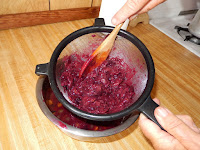Western Alligator Lizard
 I don't often see lizards around Powell Lake, but on a warm summer day we discovered one along the sandy shore of Chippewa Bay.
I don't often see lizards around Powell Lake, but on a warm summer day we discovered one along the sandy shore of Chippewa Bay.Our friend John loves critters, large and small. Looks like the feeling is mutual.
 The Reptiles of British Columbia website says there are four varieties of lizard in BC. I had a hard time deciding, but I'm pretty sure this one is a Northwestern Alligator Lizard. The other option was a Western Skink, but this one didn't have a blue tail or white stripes.
The Reptiles of British Columbia website says there are four varieties of lizard in BC. I had a hard time deciding, but I'm pretty sure this one is a Northwestern Alligator Lizard. The other option was a Western Skink, but this one didn't have a blue tail or white stripes.Northwestern Alligator Lizards often flee, bite, or lose their tails if threatened. This one was quite docile and even let us pick it up for a posed shot. It then proceeded to climb John's arm to perch on his warm shoulder. Once back on the ground, it posed for a few more shots before heading off into the rocks.
The lizard's diet includes insects and spiders. We have plenty of those. They also thrive in cool, wet climates. We have plenty of those too. Because of their wide choices of habitat, you will find them in forests, grasslands, banks of streams and lakes, and even ocean beaches.
Alligator Lizards hibernate underground in the winter and remain nearby all year long. Females use live birth for 4-6 young in the late summer every other year. It takes that long to recover from the live birth process. Their primary predators are snakes, birds of prey, and even house cats for city cousins.
Summer is basking time, so if you are walking on a sandy beach keep your eyes on the ground. You might find a photogenic Northwester Alligator Lizard posing just for you. -- Margy



































